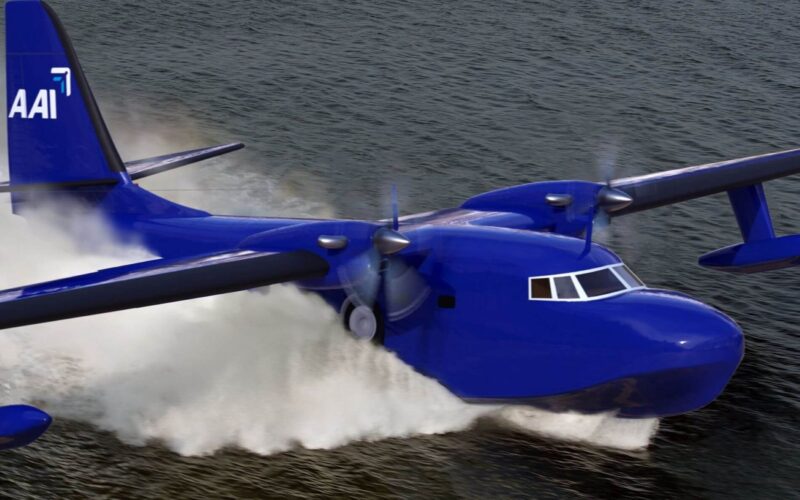Airlines across the world tend to capitalize on the latest high-tech aircraft to squeeze profit in a heavily contested market.
However, away from the largest airports and the most-flown routes, old designs dating back to early Cold War era are somewhat commonplace. Many leading militaries (including the US, China and Russia) fly strategic bombers created or even built in the 1950s. In the realm of General aviation, aircraft designed during the same period, such as the ever-present Cessna 172, are the norm.
Old designs are often prized for their reliability, ruggedness and low cost. This is the reason why many countries with underdeveloped infrastructure and harsh climates still operate scores of 1940s vintage Douglas DC-3s.
The same logic applies to seaplanes. The type experienced its golden age almost a century ago but was pushed out as airport infrastructure developed and became more accessible. It is hard to see a water-borne aircraft as something modern or at least contemporary. The more time passes, the rarer they become.
However, in many places across the world seaplanes remain in high demand. So much so, that with geopolitical focus shifting away from inland regions, militaries began to develop new seaplane designs and have even started to resurrect old designs.
Resurrecting the Albatross
There is at least one instance of a commercial company following suit. In 2016, Australian firm Amphibian Aerospace Industries (AAI) announced plans to commence manufacturing a new version the G-111 Albatross, a flying boat that ceased production in 1961.
The G-111 is the civilian version of the HU-16 military seaplane, which is also known as the SA-16, JR2F-1 and UF-1 in various services across the world. The aircraft was introduced in 1949, although its roots go somewhat deeper. HU-16 was an up-scaled and up-engined version of the slightly earlier Grumman Mallard.
More than 460 UH-16s were built and used by the US Air Force, Navy and Coast Guard, as well as many export customers such as the Royal Canadian Air Force and the German Navy. Most of these aircraft ended their careers in the late 1960s and early 1970s and were sold off to commercial operators. Some received extensive upgrades to their avionics and airframe, becoming the G-111.
Since then, both upgraded and nonupgraded Albatrosses have gone on to develop a kind of cult following. For many years an annual Albatross Seminar was held in Boulder City, Nevada, attracting scores of pilots and their colorful machines. However, in more recent years, it seems as though this tradition has waned in popularity.
It is too early to tell if AAI’s initiative will breathe new life into the tradition, but the company certainly aims to tap into the model’s popularity.
“The global market for the Albatross G-111T is enormous and it holds a monopoly in its class. It doesn’t compete with larger passenger aircraft, instead it compliments them,” Khoa Hoang, chairman of AAI, is quoted as saying in 2021 press release.
“The G-111 has a unique position in the seaplane market. It is a FAA certified, 28 seat, hull in the water, flying boat. The nearest alternatives are either 19 seats or less, or not FAA certified,” Dan Webster, CEO of AAI explained to AeroTime.
The company’s justification for restarting production of the aircraft seems solid. The Albatross does not really compete with other seaplanes still manufactured today. Furthermore, it outperforms these aircraft in many aspects. Most seaplanes operated across the globe are floatplanes (conversions or variants or regular land-borne aircraft with floats instead of landing gear). Being a flying boat, the Albatross can resist higher waves and land in harsher conditions.
Simple design, significant upgrades
AAI claims it intends to emphasize the ruggedness and robustness of the design. Asked about possible upgrades, Webster said one of the top priorities is keeping the aircraft simple, which means retaining its aluminum construction rather than using modern composites.
One of the aspects of the aircraft that is poised to receive a significant upgrade is the powerplant. The original HU-16 was equipped with a rather antiquated Wright R-1820 Cyclone radial engine. The manufacturing of this engine stopped in the 1950s, and some Albatrosses have since been reengined.
Shortly after starting work on the type, AAI began cooperating with Pratt & Whitney Canada. In 2021, the companies agreed that the new G-111s will sport the PT6A-67F turboprop, a deeply modernized variant of the ubiquitous PT6, which powers anything from Air Tractor AT-400s to the Piaggio P.180 Avantis. Upgrades to the G-111’s avionics and other systems are also on the table.
In 2016, AAI acquired FAA Type Certificates for both the G-111 and HU-16, with an intention of offering maintenance for Albatrosses across the globe. At first, the company looked into setting up shop in Sydney, however, plans later changed.
In December 2021, AAI signed an agreement with Australia’s Northern Territory Government and secured permission to develop manufacturing infrastructure in Darwin. With support from the local government and various prizes and grants, work there has already started.
According to Webster, by December 2022 AAI’s research and development team will be housed in a new building in Darwin, with a new hangar serving as home to two of the company’s G-111s.
However, the company is yet to secure the Production Certificate for the type, as well as the Supplemental Type Certificate, which would allow the company to upgrade the aircraft. Acquiring these certificates is the next step, according to Webster, and will lead to the start of low-rate production, which is expected to start in 2025.

